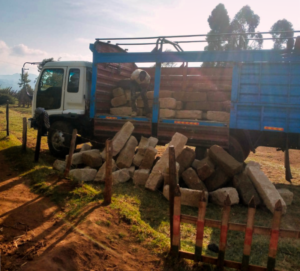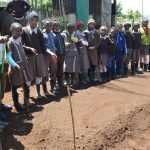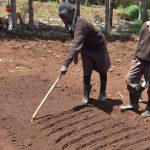Introduction
A number of Afro-centric scholars assert that there is the existence of drama in Africa before the intrusion of the colonialists. African drama is distinct from other forms of dram in the world because of its inseparable link with its cultural and traditional elements. Some says that African drama developed by European influence. Viewers believe that origin of African dram is rooted in dramatic rituals and magic practices, dances and songs of African traditions, usually practiced in pre-colonial Africa. Based on activities which relate to their tribal social life (culture, beliefs and religion) were performed through actions. Some of these performances were based on real events while others were imaginative. That is, these performances were said to be practiced due to some community-based activities already fulfilled in the future by the community. For instances, if the tribal war heroes wanted to tell their community what had happened at the battlefield with their tribal foes, they had to imitate the real incidents happened at the battlefield. Hence they were extremely careful in imitating exactly what happened.. on the other hand, if they wanted to communicate what happen in a religious ritual where they would request their Gods to increase their harvest or children, they initially had to imitate whatever the outcome they desired to achieve; although they were imaginative events.
Drama as an art form thrives on performance because it involves the imitation of an action, an enactment or re-enactment of a story in lifelike situations.
WESTERN CIVILAZATION VS AFRICAN CULTURE
Most Africans were carried away by western civilization and started mocking others who still believed in their culture. African writers saw this as kind of brainwashing and culture deletion or genocide, since colonialists used these Africans to pass on and fulfil their agenda of breaking the backbone of African’ believes.
With western civilization’s influence in Nigeria, the village teacher in the Wole Soyinka’s lion and the jewel, Lankule, has become more fond of the modern way of life and wants the village of Illujinle to back away from tradition as well. This task is not made easy because villagers refuse to put aside their Yoruban roots and traditions. The village, belle, Sidi, and the village Bale, Baroka, stand for tradition. In the play there is confrontation between Yourban culture and modern civilization through the characters, plot and structure of the drama. The play’s most modern and westernized character is Lankule, a school teacher who is determined to rid himself and others around him of traditional ways of life. In the opening scene of the play, Lankule’s desire for modernity is obvious in his initial request of Sidi. “Let me take it’” he says, seizing a pail of water that Sidi has been carrying on her head. This is
Bride Price and wife wooing
Lankule way of being the “modern gentlemen” and relieving Sidi of her heavy load, as most gentlemen would do today, trying to break the tradition of a woman’s task. Lunkuke goes on to request her hand in marriage as a Westerner would, but will not pay the bride-price. His rejection of the traditional bride-price is another part of this modern ways.
In the play Lion and the Jewel , there is important custom among the African tradition of paying dowry to the bride’s parent side. Lankule justifies his refusal to pay the bride-price, saying, “to pay the price would be to buy a heifer off the market stall. Lankule uses or abuses the traditional in accordance with his own needs and situations. He adopt a misinformed western culture towards bride-price paertially because he is a bad economic position.
Sidi exhibits her traditional views in her rejections of Lankule’s many modern advances toward her.
Wole Soyinka portrays Africans as very beautiful without western make ups or looks. Sidi later learnt of her own beauty. With European technology coming into the village, a glossy picture of Sidi has been published on the cover and throughout a magazine. After the picture is published, the Bale, Baroka, requests that she become his youngest wife. Sidi declines more traditional choice of being his last wife (and later the senior wife after the Baroka’s death)
African traditional dances and songs
African dances and songs are an integral parts Africa’s culture and customs, usually every event in Africa is marked by songs and dances. In Lion and the Jewels by Wole Soyinka, the play employs Yoruba music, especially drumming African and performers. The playwright has incorporated into this a number of dances, dance dramas and mimes through which we learn about significant events which have happened in Ilujinle, or about the personality of the characters. They are:
- “the dance of the lost traveler”, a dance drama with episodes of mime and final communal dance.
- “Sadiku’s dance of triumph” a solo performed around a carving of the Bale.
- “The mime of the white surveyor”, largely a mime in the course of which the prisoners sing and move rhythmically.
- “the dance of Baroka’s story”: in two parts, the story of Baroka’s sex life as understood by Sadiku.
- “The finale”, a bridal and communal dance which takes Sidi off to her husband and draws the play to a close.
Soyinka integrates African drama with the “drama of the English language.” The primary reason being the use of language itself, because English is the common language to many countries. Another reason why he follows the English tradition is in the act of writing the play down.
SONGS AND PERFORMANCES IN MUNTU PLAY
Some of these drama performances were held at open gatherings while sometimes receiving the spectator’s comments, usually these performances were accompanied by drums, flute and other traditional African music instruments. In the play Muntu by Joe de Graft, he expresses traditional African drama by the use dances and drums. Drums and drummers are using the drums to pass on the message to the audience. “ DIVINE DRUMMER: kon-kon, kon-kon-kon ,kon-kon………..” “ DEVINE DRUMMER: Odomankoma Gyerema se okore beebi………”
COMMUNITY DRUMMER even interpret the messages of the drums.
African traditional religion, beliefs in after death and supernatural beings
The traditional beliefs and practices among African people are highly diverse beliefs that include various ethnic religions. Generally these traditions are oral rather than scriptural and passed down from one generation to another through folk tales. Songs and festivals. Include belief in an amount of higher and lower gods, sometimes a supreme creator or force, beliefs in spirits, veneration of the dead, use of magic and traditional African medicine. In the play, Muntu by Joe de Graft, Muntu arrive with his children in Muntu land. The family has come from a faraway journey that is connected to the universe.
In the evening Muntu narrates a story to his children about Odomankoma, who created life and death but death rose against her and killed her. And after Odomankoma died she later came back to life and believed she lives on forever. Then Muntu and the children worship and offer sacrifice to their gods. The family later settles in Muntu land. Muntu tells his children about the story of how humankind came to be. The story is an illusion to the creation story in the bible. MUNTU: Listen, then my children. After Odomankoma came to life again, she created space, then she created the firm Earth……..”
The people of Kafira a dystopian society in the book Betraya in the City by Francis Imbuga have certain beliefs and practices as described as ways of African tradition culture.
To begin with, Doga believe that the dead can avenge for their death especially if they had been killed. He summons the spirit of Adika to follow those who killed him to all the corners of the earth.
Secondly, these people believe in ritualistic cleansing. From what we get in the conversation between Nina and Doga, someone tried to burn down Adika’s final place so as to cover their tracks. The essence could be that the killer wanted to avoid being haunted.
Furthermore, tradition demands deep respect for the elderly. Nina threatens Mulili by claiming that if he saw her naked, he will lose his able sight. Mulili plays down the curse claiming that he had seen many bodies but still with a good eyesight. However, Jere humbles himself.
Doga who believes in curses, throws one at Mulili and as the play ends, Mulili surely died the way Adika had died. (Pg 10 and pg74)
The final aspect of tradition is shown when Nina and Doga prepare for the hair shaving ceremony. They believe it as a final right for the deceased and that it should be carried out according to tradition. However, Nina believes that something may go wrong given that the grave had been tampered with. Tradition cements the authenticity of the play as an African play with tradition and aspects of belief. It reinforces the way people were trained to obey the elderly, the dead and also conduct themselves










